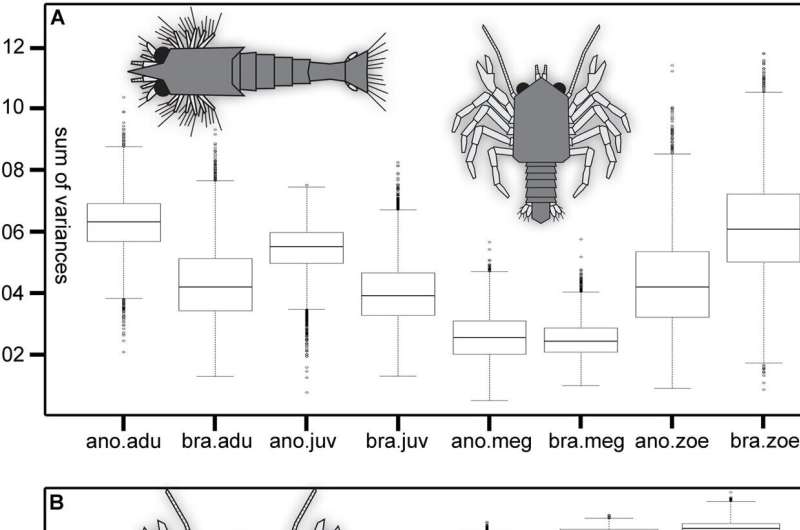This article has been reviewed according to Science X's editorial process and policies. Editors have highlighted the following attributes while ensuring the content's credibility:
fact-checked
peer-reviewed publication
trusted source
proofread
Biodiversity in crabs: More than counting species

Biodiversity is often equated with species numbers. A team led by LMU zoologist Professor Carolin Haug has shown that matters are a good deal more complicated than that. The researchers compared the shield shapes of "true" crabs (Brachyura) and "false" crabs (Anomura), the latter of which include squat lobsters and hermit crabs.
The findings are published in the journal Scientific Reports.
Their results showed that false crabs have a greater variety of shield shapes, which are directly related to the lifestyle and thus the ecological role of the animals, even though there are more species of true crabs.
"A different picture emerges when we observe the animals during their development," says Haug. In their plankton-dwelling larval phases, the diversity of true crabs is highest.
Meanwhile, diversity is lowest in an intermediate phase that true and false crabs go through and in which the transition from planktic to benthic (bottom-dwelling) habitat takes place; moreover, this is where they most closely resemble their early ancestors.
"Our study indicates that biodiversity is much more complex than can be comprehended by species numbers alone," Haug points out.
More information: Florian Braig et al, Morphological diversity in true and false crabs reveals the plesiomorphy of the megalopa phase, Scientific Reports (2024). DOI: 10.1038/s41598-024-58780-7
Journal information: Scientific Reports
Provided by Ludwig Maximilian University of Munich



















